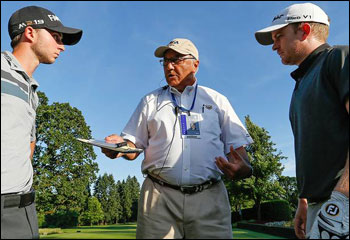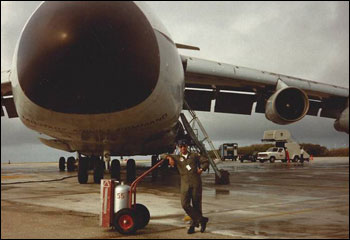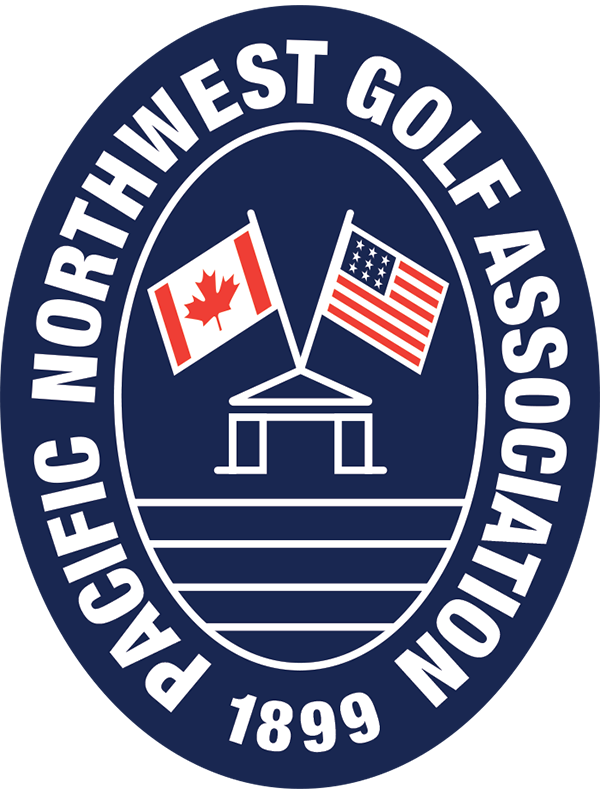Former PNGA President Cliff Shahbaz Brings Special Perspective to USGA Service
By Greg Midland, USGA
Cliff Shahbaz brings a special perspective on what it means to be a USGA volunteer.
Imagine being barely old enough to rent a car and yet sitting at the controls of the world’s largest military aircraft, flying supplies to U.S. troops in Vietnam. Or being in command of a sleek commercial jumbo jet, safely transporting passengers across oceans and continents.
Now transfer those experiences to being a Rules of Golf official at the highest levels of the game, where knowledge, preparation and poise are critical. Seems like a natural fit, right?

That’s life in a nutshell for Lt. Col. Clifford Shahbaz, who was recently nominated to serve a second year on the USGA Executive Committee. Shahbaz, 69, of Portland, Ore., is a decorated Air Force veteran who went on to a 28-year career at United Airlines.
After years of volunteer service in the golf industry for the Oregon Golf Association and Pacific Northwest Golf Association (for which he also served as president from 2007-2010), he brings a rare perspective to his volunteer work with the USGA.
“Part of the anal-retentive mind of a pilot attracts us to rules and structure,” said Shahbaz. “There are rules of flying – physical rules and legal rules – and if you don’t obey them, there are consequences. It’s the same with golf. To me, the Rules book and Decisions book are kind of like a flight manual.”
Since his retirement from United in 2006, Shahbaz has devoted more time and energy to the game he loves – he plays regularly and carries a 12.2 Handicap Index at Columbia Edgewater Country Club in Portland. Serving the USGA is the culmination of a goal he first thought about in high school.
“I was watching the U.S. Open on a black-and-white television,” recalled Shahbaz. “It was taking place somewhere hot and humid. I saw Joe Dey and a few of the other officials wearing long-sleeve white shirts with ties, and an armband that said ‘Rules.’ I just thought, this is something I’d like to get involved in.”
Of course, he had to put those thoughts on hold for what would become more than 35 years of service and adventure at 35,000 feet.
Shahbaz spent most of his childhood in Northern California, a self-proclaimed “Air Force brat” whose dad was an officer. He enrolled at the University of California-Berkeley, joined the ROTC and, after earning his undergraduate degree in 1969, promptly entered pilot training in Arizona. This was no “Top Gun” environment; the war in Vietnam was raging and Shahbaz knew exactly what he was getting into when he emerged from flight school in 1970.
“I wanted to go to Vietnam, so I picked an assignment that would get me there,” he said. “I flew a C-47, and then stayed for another year and moved to another cargo plane, a C-130. We flew supplies to troops; in some locations the bases were surrounded by enemy forces so the only way to supply them was by air.”
When Shahbaz returned to California in 1972, he remained on active duty for another seven years and in the Air Force Reserve for 10 years after that. He flew a C-5, a four-engine transport that at the time was the largest aircraft in existence (roughly 20 percent wider and longer than a 747). What’s it like to actually be in command of something that huge?
“Everything has its power steering,” said Shahbaz with a smile. “So as big as it is, it’s not like it takes a tremendous amount of physical force to fly it. The controls were quite nice. More of the issues came when we were on the ground and taxiing, because you have to be careful to not hit anything with the wingtips that span more than 200 feet.
“It was a long-range airplane. We had a four-person crew in the cockpit and quite a few load masters to manage the cargo. Typically, the flights were 8 to 10 hours from California, to bases all over the world.”
Nearing 30, and with experiences under his belt that few others could match, Shahbaz looked to build his career in – what else? – commercial aviation.
He was hired by United Airlines in 1979, starting as the second officer of a Boeing 727, which after the C-5 was like going from a Hummer to a Honda Civic. After a five-year furlough brought on by the economic recession of the early 1980s, Shahbaz was recalled by United in 1986 and began his ascendancy as first officer and ultimately captain on progressively larger aircraft: the 737, the DC-10, the 777 and finally the 747. By this time he had moved to Portland, though he flew mainly out of San Francisco and Los Angeles. It was during the 1990s that he rekindled his love of golf.

“When I was on the 747, we had a great route to Auckland, New Zealand, and Sydney, Australia,” he said. “I flew that for a number of years and got to play quite a bit.”
However, those warm memories are also tinged with sadness, particularly for someone who was an active pilot at the time of the terrorist attacks of Sept. 11, 2001.
“I had just returned from a long trip and didn’t get home until about 1 in the morning, so I was trying to sleep in a bit,” recalled Shahbaz of that Tuesday morning 15 years ago. “Someone called me and said, ‘Can you believe what’s happening?’ I had no idea what they were talking about. I finally turned on the television, not fully awake yet, and obviously it was just shocking.
“I didn’t know any of the crew members on the two United planes that were hijacked, but in the end that didn’t matter. Flying is a brotherhood, and when your brother is hurting, you’re hurting. It was moving for all of us in that respect.”
Interestingly, Shahbaz said that getting back in the air after 9/11 helped ease the pain. “It was a cathartic experience to pilot a plane again because you’re thinking, OK, this is normal. Flying is where I’m comfortable, so I was back doing what I do.”
Nowadays, what Shahbaz does with a similar degree of comfort is work long days at USGA championships and contribute his skills to the Association in a variety of ways. Like many volunteers, he rose through the local and regional ranks. He first became involved as a Rules official for the Oregon Golf Association and Pacific Northwest Golf Association; the latter was then led by John Bodenhamer, who now oversees Championships and Governance for the USGA.
“I met John at the very first championship that I volunteered for, and he has been one of my mentors in this journey,” said Shahbaz.
Shahbaz’s service in the Pacific Northwest caught the attention of Ron Read, a former USGA staffer. Read recommended Shahbaz for the U.S. Mid-Amateur Committee, which he has served on since 2006.
“I am not sure he has missed a championship in that time,” said Bill McCarthy, director of the U.S. Mid-Amateur. “His enthusiasm for amateur golf on the local and national level is amazing. His ‘let’s get it done’ attitude is infectious. We are lucky to have him.”
Shahbaz never envisioned joining the Executive Committee. He was surprised to be asked to interview, and wasn’t ready to believe it until the day of his election last February.
“In the end, being on the committee has taught me that people who I thought I had little in common with … it’s quite the opposite,” he said. “We all have golf in common, and love it and serve it in one way or another. It’s been a very interesting ride.”
Just like many of his favorite flights, Shahbaz is hoping this ride continues into the sunset.
Greg Midland is the director of editorial content for the USGA. Email him at [email protected].






